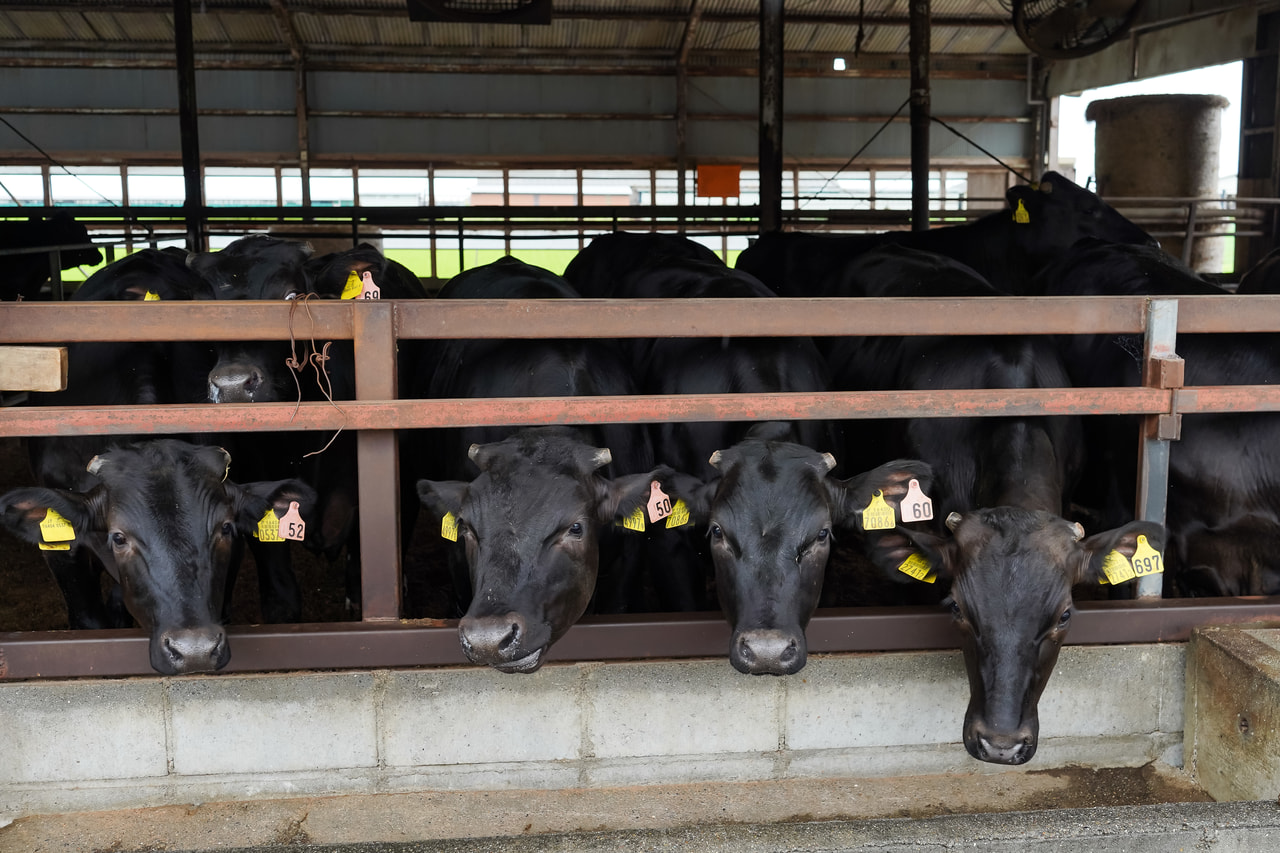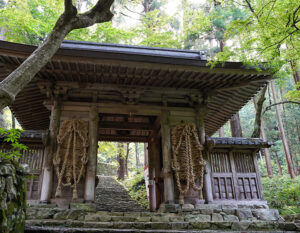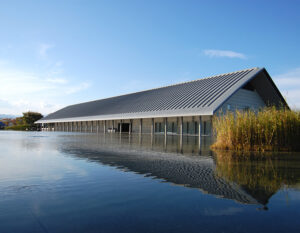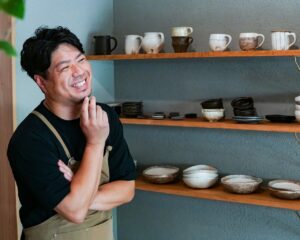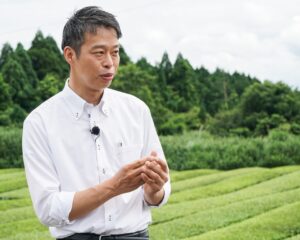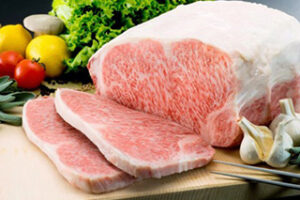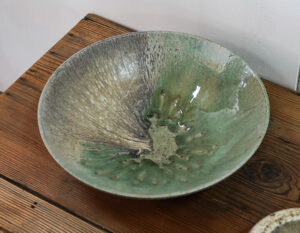Japan has three major brands of Wagyu beef: Omi beef, Kobe beef, and Matsusaka beef. Of these, Omi beef is the oldest Japanese beef brand, dating back more than 400 years. We visited Fujii Ranch, one of the few farmers producing Omi beef that engages in integrated management of breeding and fattening, and asked them about their passion for producing healthy and delicious beef.
Omi Beef” was born in an era of meat bans.
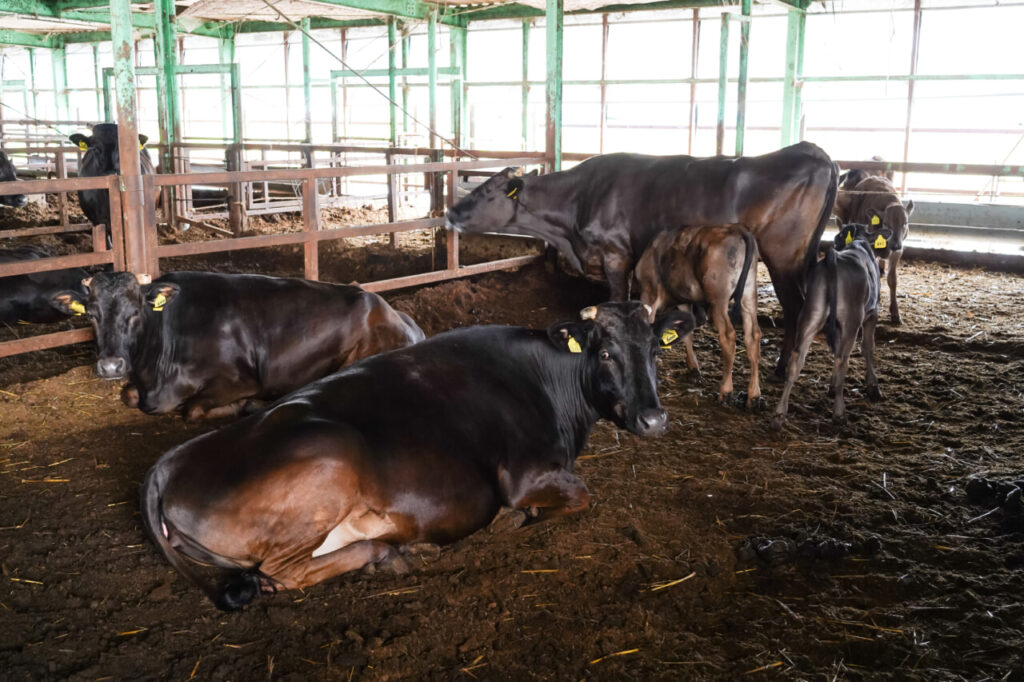
The history of Omi beef goes back 400 years. During the Edo period (1603-1868), when meat was still banned in Japan, the Hikone clan was the only clan officially allowed to slaughter cattle, as it was customary for the clan to offer cow hides to the shogunate every year for use in the camp drum. Although slaughtering cows was done for self-sufficiency of cow hides, once the hides were removed, the meat remained. Omi beef is said to have originated when the clan began selling beef marinated in miso as a nourishing medicine, without violating the prohibition on meat.
Omi beef is characterized by its fine and tender texture and its beautiful “sashi” (a grain-like grain). Sashi is a mesh of fat in the lean part of the meat. Omi beef has a good mixture of meat and fat, and the sweet fat is said to melt in the mouth.
Ohnaka District, a major production area of Omi beef
Omihachiman City is located in the eastern part of Shiga Prefecture. The Ohnaka area, located in a corner of the city, is a major production center of Omi beef, with one-third of the prefecture’s beef cattle concentrated in an area of about 10 square kilometers.
The area was initially the largest among the areas around Lake Biwa that were reclaimed as a means of solving the postwar food shortage, and agriculture centering on rice cultivation was prosperous. There are about 40 livestock farms in the district, some of which raise only Omi beef, while others raise large crossbreds that are a cross between Holsteins and other dairy cattle and Wagyu cattle for food.
The definition of Omi beef is “Japanese black cattle bred for the longest time in Shiga Prefecture. Compared to other beef brands, which have strict standards for meat quality grade and number of days of fattening, this definition may seem a bit broad, but this is one of the characteristics of Omi beef that makes the differences among producers stand out.
One of the Few Producers Engaging in Integrated Management

Mr. Norio Fujii, who runs the Fujii Farm, is engaged in integrated management of Omi beef breeding and fattening in the Ohnaka area. His father’s generation settled in the area and converted to livestock farming together with neighboring farmers when the policy of reducing rice acreage was introduced. Mr. Fujii has loved cattle since childhood, and after studying agriculture at a junior college, he chose to become a farmer without hesitation.
In general, beef cattle production is separated into “breeding management,” which aims to produce calves, and “fattening management,” in which the calves are raised to adulthood and shipped.
The work involved in breeding and fattening is completely different, and it is very difficult for a single farmer to do both. The reality is that many people who start out quit soon after starting because if they fail, their productivity immediately drops and they cannot make ends meet as a farmer,” says Fujii. For example, in terms of breeding, the key to management is how to reduce the number of days of empty births by inseminating the animals without missing the timing of estrus, which differs from one individual to another. On the other hand, in fattening, the key is to feed the cows as much food as possible and keep them healthy and stress-free.
If we want to continue to do this, we have no choice but to try integrated management.
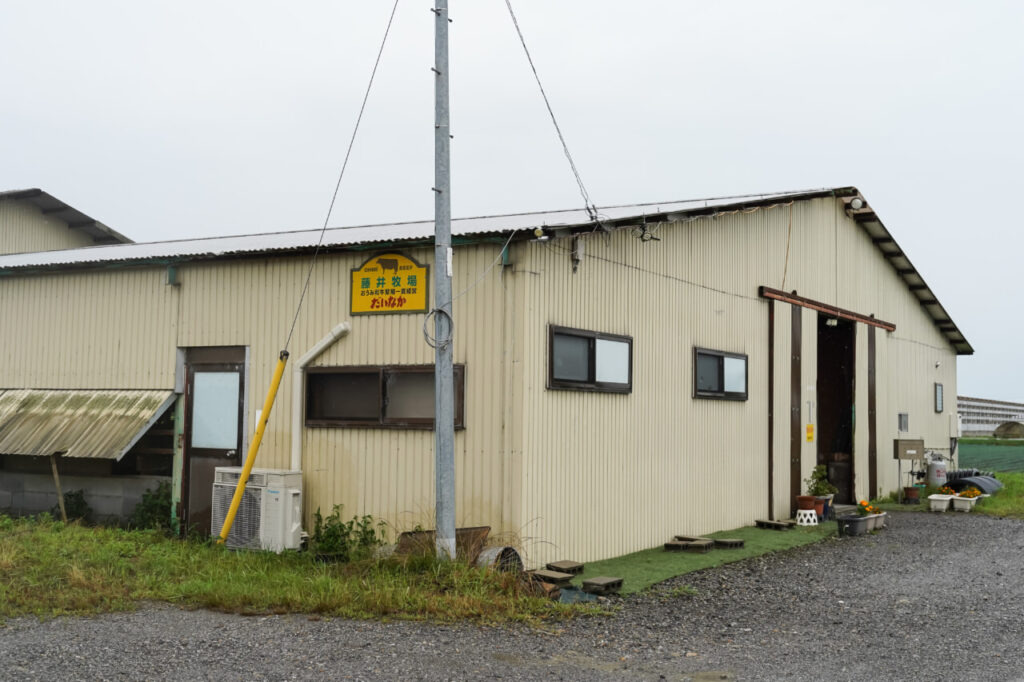
Fujii says that it is very difficult to combine breeding and fattening, each of which requires completely different knowledge and experience, but it is worth the effort.
The number of farmers running breeding operations is gradually decreasing due to the aging of managers and lack of successors, and the price of calves is on the rise. But that does not mean that the selling price of meat will continue to rise. We were originally a farmer specializing in fattening cattle, but if we continue to only fatten cattle, we will be caught between buying expensive calves and selling them at a low price. We decided that if we wanted to continue raising Wagyu cattle, we had no choice but to do it all ourselves.
Does feed determine how tasty a cow is?
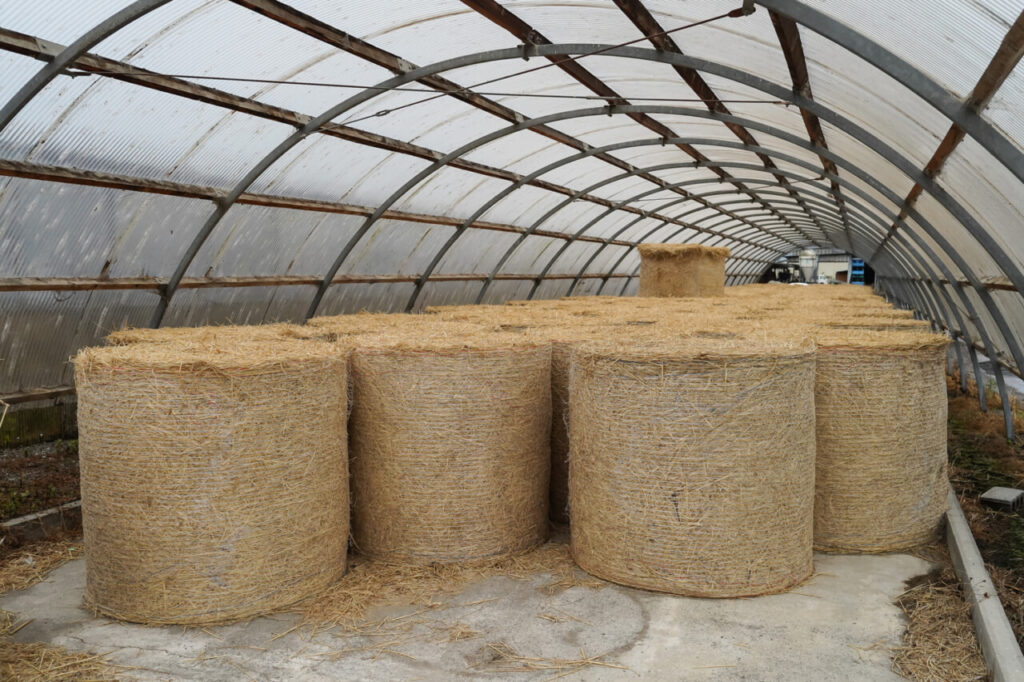
It is said that the quality of beef depends largely on the pedigree of the cattle. However, according to Fujii, the quality of the fat is greatly influenced by the type of feed fed to the cattle.
If you feed too much high-calorie feed, the fat will become tough and the meat will cause indigestion. Also, if you feed too much formula feed to calves because you want them to grow quickly, they will get too fatty and easily get sick, and eventually they will not continue to eat a lot of feed until the end of their lives. It is important to first create a stomach that will allow the cows to continue eating plenty of food, by considering the balance between roughage (mainly grass) and compound feed mixed with corn and other feeds.
Aiming for sustainable livestock farming through “recycling-oriented farming
According to the Ministry of Agriculture, Forestry, and Fisheries of Japan, the self-sufficiency rate for animal feed in Japan is low, at about 25% in 2021. In particular, only 13% of feedstuffs, such as corn and other concentrated feeds, are produced domestically. Even for cattle raised in Japan, the majority of feed is from foreign countries.
I want to raise Omi beef on home-grown feed from birth to shipment . By growing his own straw and grass, which are necessary for raising Omi beef, he is able to prevent diseases caused by imported feed that does not suit his constitution and to ensure stable production of calves. The cattle grow fodder in the rice paddies, eat the grass that is produced, and return the cattle manure to the rice paddies to make more fodder. The use of cattle manure helps reduce the use of chemical fertilizers, and the self-sufficiency of feed helps reduce production costs. This recycling of resources is the key to a sustainable rearing method.
Pursuing deliciousness without being restricted by ratings
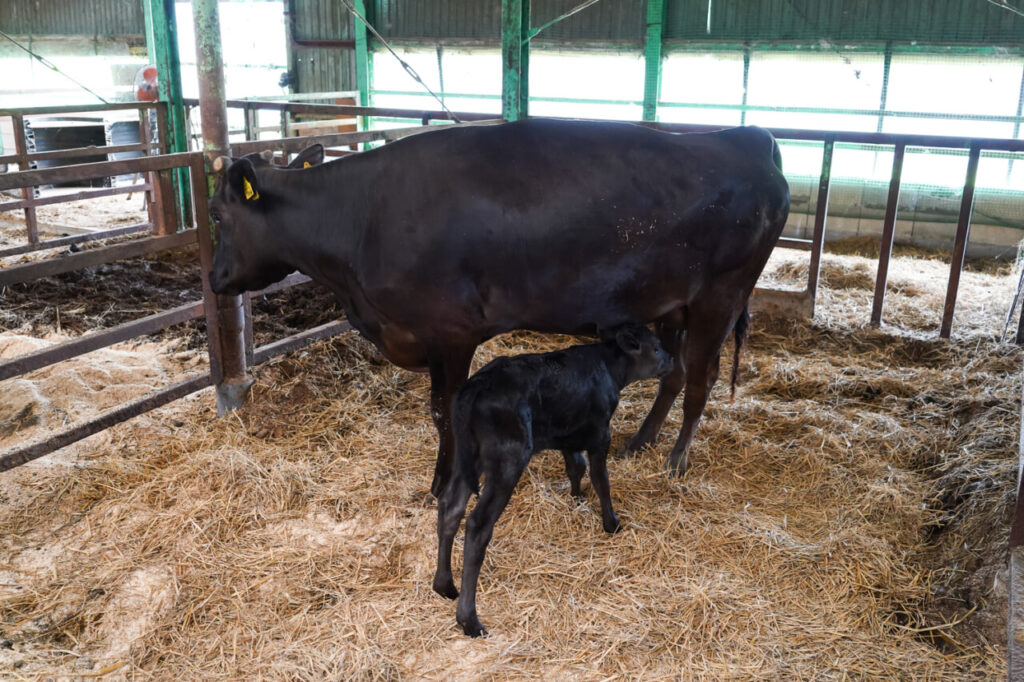
The highest grade of beef is considered to be “A5 rank 12. The conditions for the highest grade are a high degree of tannin and good marbling, and only one out of every 30,000 head of beef can be rated as A5. But is this rare meat really “good for everyone”?
People say, “It is a matter of course that the beef is A4 rank or higher, but anything lower than that is called Omi beef. However, for us, A2 or A3 beef is Omi beef. They are all raised in the same land with the same care and attention. The most important thing is that they are healthy and stress-free, and that they continue to eat well until the end of their lives. We are not only concerned with the amount of sinew, but are also conscious of creating a good balance of lean and fat so that the aroma when the meat is cooked is appetizing. We want to raise cattle that will be delicious to all kinds of people.
Fujii Farm has about 100 head of cattle. It is not a large ranch, but the cows are eating freely in a spacious barn with plenty of sunlight and good ventilation. In the ever-changing livestock industry, we could see a ray of hope for those involved in the meat industry in Mr. Fujii’s efforts to create new possibilities with a heart for the gift of life.



